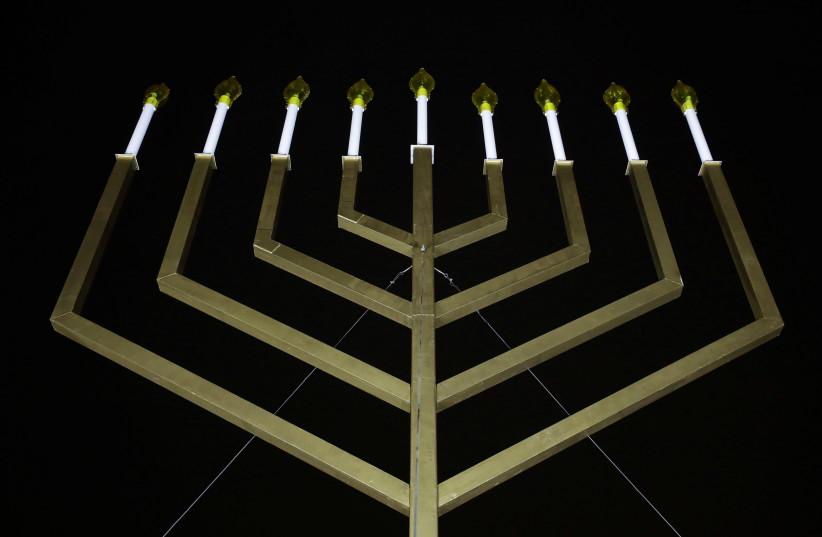“And at the end of two years, Pharaoh dreamed... and behold, seven ears of corn came up on one stalk, plump and good” (Gen 41:1, 5).
Many are the interpretations of those simple phrases “at the end of two years” and “on one stalk.”
The Ba’al ha-Turim notes that the phrase bekaneh echad (“on one branch or stalk”) occurs only three times in the entire Tanach. The first two times are in this verse and in Gen. 41:22, when Pharaoh relates his dreams to Joseph. The third time is in the description of how Bezalel constructed the menorah for the Mishkan:
“He made the menorah of pure gold... six branches emerging from its sides, three branches of the menorah on its one side and three branches of the menorah on its other side, three cups engraved like almonds, on one branch [bekaneh echad]” (Exodus 37:17-19).
“This,” the Baal ha-Turim expounds, “is because plenty brings light to the world; therefore, Pharaoh saw the good ears of grain ‘on one branch,’ whereas the scorched ears of grain he did not see on one branch.” Just as the plentiful harvest gives life to the world, so too does the menorah, whose restoration in the Holy Temple we celebrate in these days of Hanukkah.

The Sfat Emet (the Gerre Rebbe) takes up the phrase “two years” (shnatayim yamim) and writes that these “two years” are favorable times, such as Shabbat and Hanukkah, which fight the forces of darkness with light. The light of Shabbat, he says, elevates us, grants us respite from darkness, and gives us light and energy to overcome Pharaoh (the forces of the side of evil). Just as the light of Shabbat seeps into the weeks, so too can the light of Hanukkah light up the coming year. According to the Sfat Emet, our ancient sages established for us the lights of Hanukkah not only so that we should have energy to fight against evil with light but also that we should be victorious.
The Torah portion Miketz is read during Hanukkah most years; this year, it is read just as Hanukkah ends. Miketz opens with Joseph rising from the darkness of prison to great light, while Hanukkah celebrates the end of darkness with the Maccabean rise to power.
The Midrash picks up on the word “miketz” (at the end of) and connects it to a verse from Job, “God has put an end (ketz) to darkness” (Job 28:3). He allowed the world a fixed number of years of darkness and decreed how many years Joseph would remain in darkness in prison. As soon as the ketz of that period came, Pharaoh dreamed” (Bereishit Rabbah 89:1).
The word “choshekh” (darkness) is used over and over again in the Midrash to represent the Greek Empire’s subjugation of Israel. God put a ketz, an end, to our national darkness at the time of Hanukkah, when the Maccabees took up arms against the darkness and restored light to the nation and the Land. And here we are again bizman hazeh (at this time) fighting forces of darkness as be’yamim ha’hem (in those days).
The fiery image of a menorah
Yoram Raanan’s painting Menorah Cycle is one of a series that was painted for an exhibition in Taiwan. Viewers were enthralled by the menorah as an image of victory, hope, and light. This menorah is painted in acrylic, overlaid with gold leaf that is both crumbled and laid on in full sheets. The texture is enhanced by glass beads. Variations of gold, yellow, and cream, light and dark, create a lively sense of drama. When you look at the painting up close, you can see strokes of gold, flickers and flames, crumbled gold leaf, and diamond shapes. Only at a distance does the painting come into focus and present a circular impression of a fiery menorah. The circularity gives a sense of the spiral of time and space, while the depth in the painting brings us back in time, as a pathway guides us into mysterious inner realms which have a jewel-like feeling, rich in texture with gold leaf and suspended glass beads.
The menorah seems to be emerging from darkness, in a play between darkness and light. The paint itself seems to be on fire, while dynamic strokes create the feeling of flickering movement, expanding outward while at the same time drawing you inward and upward within the glowing light of the menorah.
As we take leave of Hanukkah, it is the embrace of this warm light of hope and victory that we want to take with us. For eight nights, as we lit our hanukkiot, we sent all the light and blessings for protection to our holy warriors. In Hassidut, Hanukkah is considered to be the final sealing of the holidays that began on Rosh Hashanah, and we pray for it to be sealed with light.
It is hard to take leave of Hanukkah this year, but Hanukkah and the image of the menorah do not take leave of us. According to the Slonimer Rebbe, when God “let there be light, and there was light,” this is the light of the menorah in the Holy Temple, and this light lasts forever. ■
Meira Raanan is the author of Art of Revelation: A Visual Encounter with the Jewish Bible, a commentary on the paintings by her husband, Yoram Raanan. She also teaches Jewish meditation. Esther Cameron is a poet, scholar, and essayist living in Jerusalem. She is editor-in-chief of The Deronda Review.
